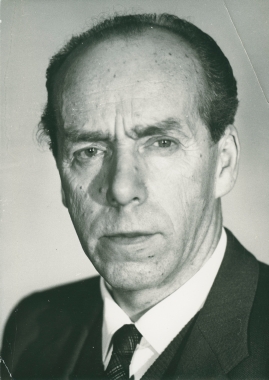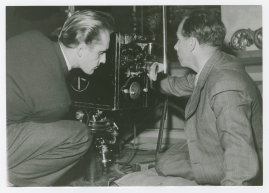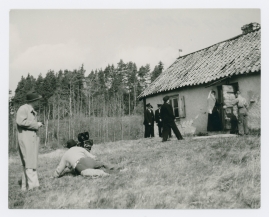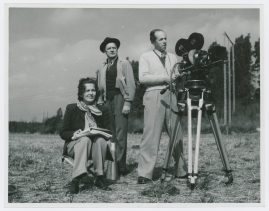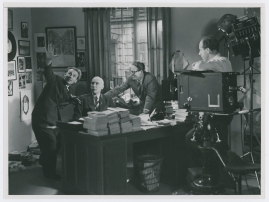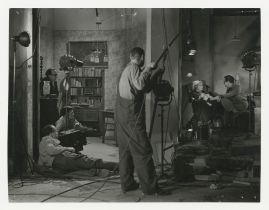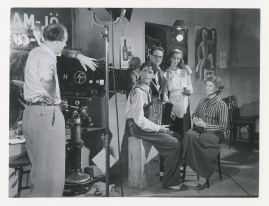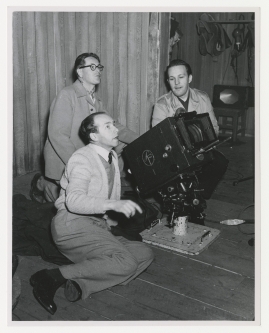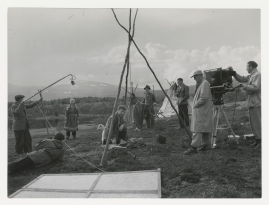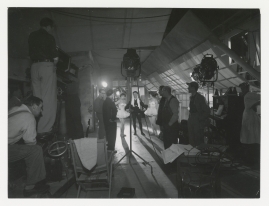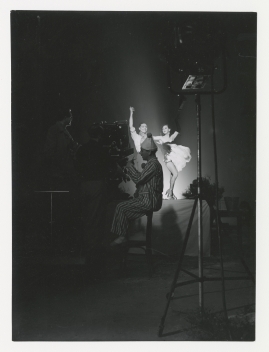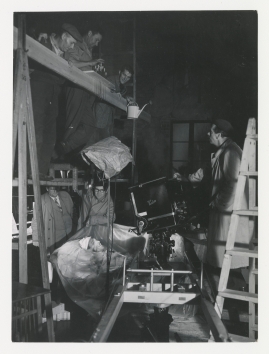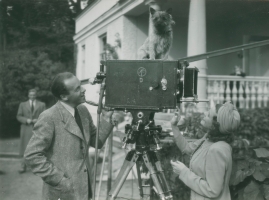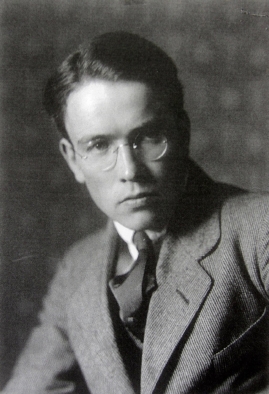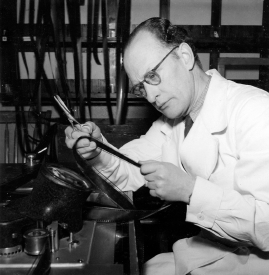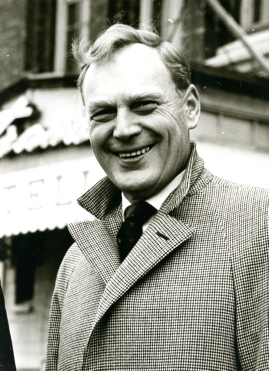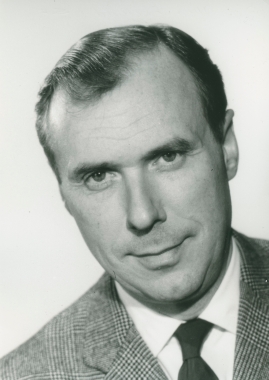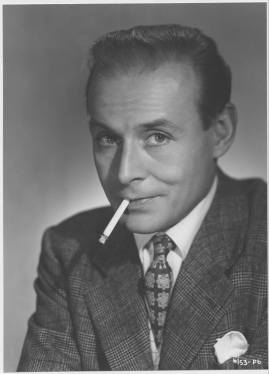Martin Bodin
Table of contents
- Basic facts
- Links and resources
- Biography
- Awards
- Films
- Original work
- Soundtrack listing
- Groups
Basic facts
Media (14)
| Director of Photography | |
|---|---|
| First Assistant Cameraman | |
| Show all films | |
| Awards |
|
Biography
Swedish cinematographer. Born in Klinte, Gotland. Died in Sollentuna.-An interest in photography and film led Martin Bodin to Svensk Filmindustri's studios Filmstaden in Solna at the time when the talkies were on the up and up, and once there he learned his craft under the best possible teacher, the master cinematographer of Swedish silent films, Julius Jaenzon. Well pleased with his pupil, in 1930 Jaenzon made Bodin his assistant cinematographer for the shoot of Gustaf Molander's Fridas visor ('Frida's Songs') and the following year for Victor Sjöström's...
Biography
Swedish cinematographer. Born in Klinte, Gotland. Died in Sollentuna.
-
An interest in photography and film led Martin Bodin to Svensk Filmindustri's studios Filmstaden in Solna at the time when the talkies were on the up and up, and once there he learned his craft under the best possible teacher, the master cinematographer of Swedish silent films, Julius Jaenzon. Well pleased with his pupil, in 1930 Jaenzon made Bodin his assistant cinematographer for the shoot of Gustaf Molander's Fridas visor ('Frida's Songs') and the following year for Victor Sjöström's Markurells i Wadköping ('The Markurells in Wadköping'), based on the popular play by Hjalmar Bergman.
Whilst the films hardly count among the directors' best, these were inspirational years of learning, and shortly thereafter SF gave Bodin a position as permanent principal cinematographer, one which he held for no fewer than 116 films in 35 years, an average of more than three films per year. Such was the situation in Swedish film during those years - for better or worse. It was literally a "film industry" with permanent employees and fixed studios, and cinematographers were unable to choose the directors they wanted to work with. They had to take the jobs they were assigned, one result of which was a number of throwaway films which lacked the personal touch.
The directors themselves had more opportunities to choose and - in combination with the right cinematographer - were often able to develop a long and fruitful partnership. For Martin Bodin things began pleasantly enough with Gustaf Edgren and his Fridolf Rhudin films, but in the mid 1930s the two of them made a couple of classics, Karl Fredrik regerar ('Karl Fredrik Reigns', 1934) and Walpurgis Night (Valborgsmässoafton, 1935). Ten years later he was behind the camera for Edgren's most successful and beautiful film, Rain Follows the Dew (Driver dagg faller regn, US title Sunshine Follows Rain), for which Bodin also drew his share of the plaudits.
As a general rule, reviewers (and film historians) rarely mention a cinematographer's name, but this is not the case when they work together with directors who are more conscious of pictorial qualities. One example of this is Per Axel Branner's Konflikt ('Conflict', 1937). Veteran critic Bengt Idestam-Almqvist (who contributed to Stockholms-Tidningen under the nom de plume of Robin Hood) wrote: "Cinematographer Martin Bodin has taken vivid, rich and exquisitely beautiful shots of slipways and factory halls, of cranes set against the sky and glowing lumps of iron under the hammers. (---) The atmosphere of the shipyard is captured - one feels the bond between workers and machines. The shipyard is a living entity."
Even more striking was his partnership with Alf Sjöberg in Frenzy (Hets, 1944. US title Torment) with its often suggestive and expressionistically lit images; in Resan bort ('Journey Away' 1945), Bodin was, according to Gösta Werner, "unparalleled in his use of shadows and light". And Only a Mother (Bara en mor, 1949), with its elements of nature documentary, brought Bodin the cinematography award in Venice.
Bodin only shot one film for Ingmar Bergman, A Lesson in Love (En lektion i kärlek, 1954). For the last seven years of both their careers he enjoyed a partnership with Hasse Ekman, from Med glorian på sned ('With a Lopsided Halo', 1957) and Jazzgossen ('The Jazz Kid',1958) to Äktenskapsbrottaren, ('The Adulterer', 1964). With these films Bodin was back in a 1930s style atmosphere of carefree comedy and farce, a type of film he handled with aplomb. His last ever feature belongs undoubtedly among the classics of the genre, Hans Alfredson and Tage Danielsson's Att angöra en brygga ('How to Dock a Boat', 1965).
The Swedish reference book "Bra Böckers Film och TV lexikon" sums up Martin Bodin's achievements as follows: "He developed a rare talent for dramatic, sensitively nuanced and style-conscious picture composition, often refined in its use of light and shade."
Bengt Forslund (2012)
(translated by Derek Jones)
Awards
| Best Cinematography | Venice | 1950 | (Premio Internazionale per la Fotografia) | ||
|---|---|---|---|---|---|
| Swedish Film Society Prize | Stockholm | 1950 | (plakett) |
